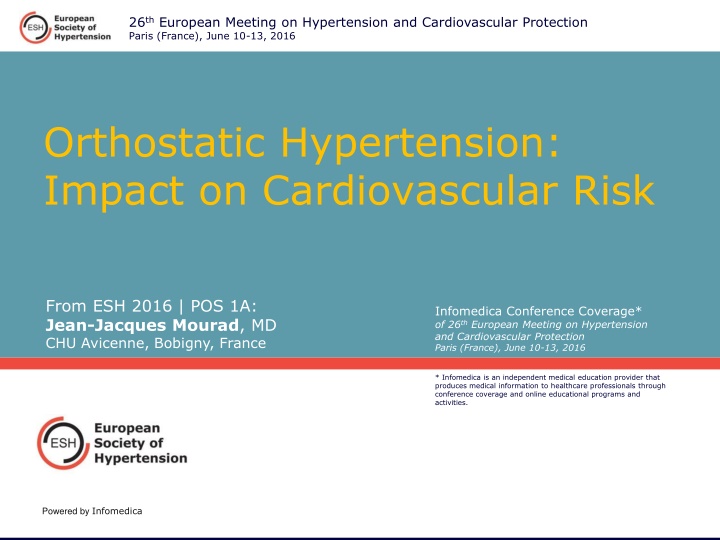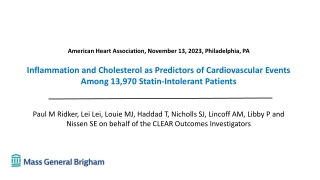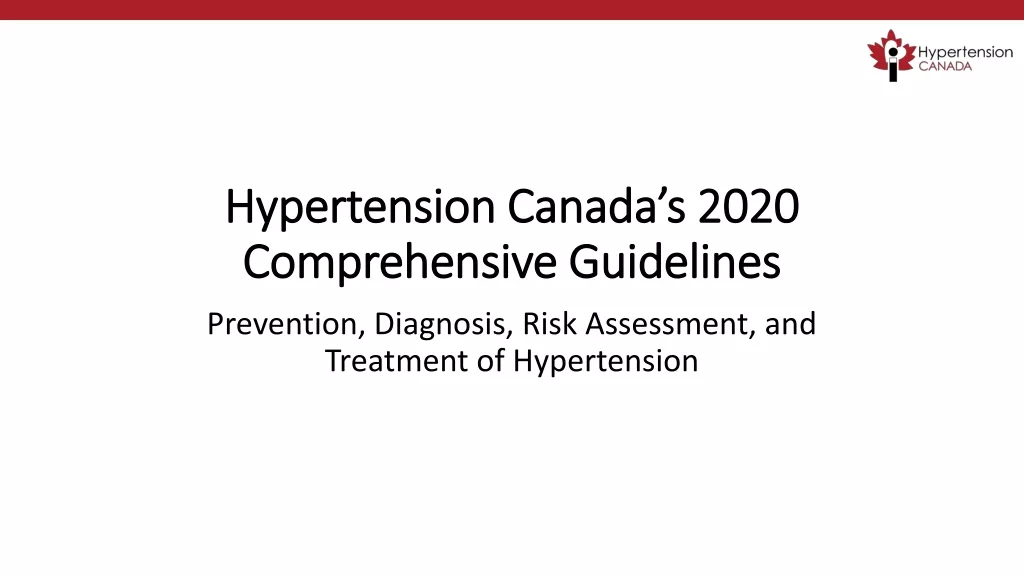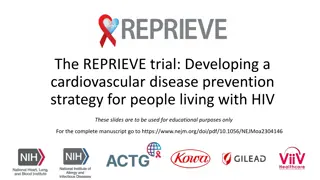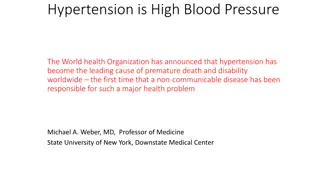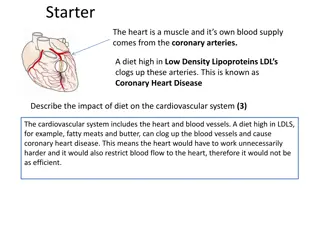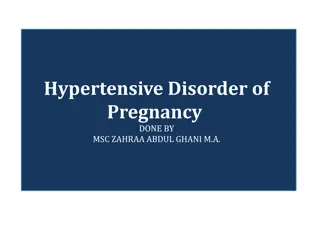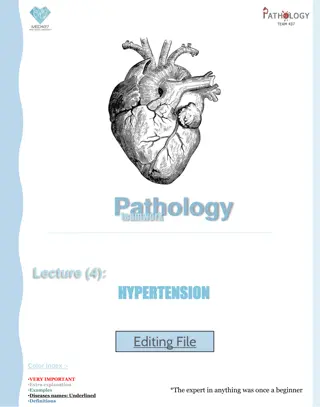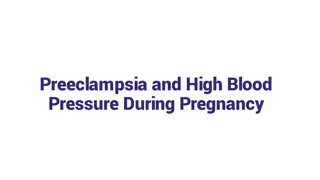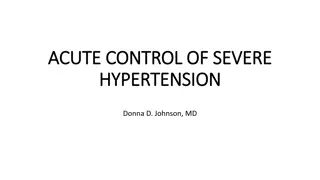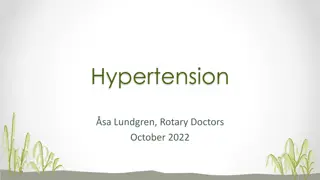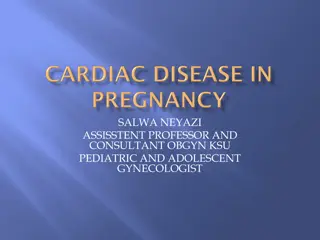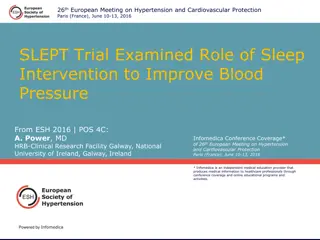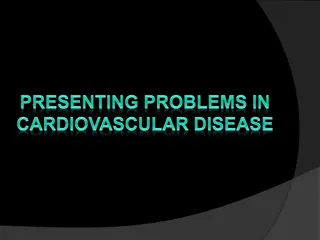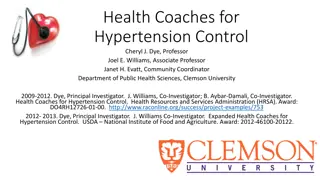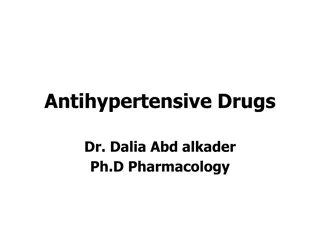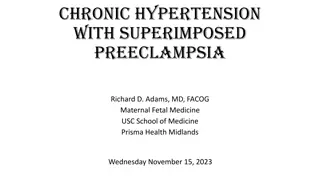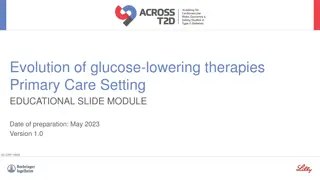Orthostatic Hypertension: Impact on Cardiovascular Risk
An overview of orthostatic hypertension (OH) and its impact on cardiovascular risk, including discussions on associated mortality, current definitions, and possible mechanisms. Further research is needed to determine the role of OH as a risk factor or marker in specific populations. The presentation highlights the need for an agreed definition of OH and optimal treatment strategies.
Download Presentation

Please find below an Image/Link to download the presentation.
The content on the website is provided AS IS for your information and personal use only. It may not be sold, licensed, or shared on other websites without obtaining consent from the author.If you encounter any issues during the download, it is possible that the publisher has removed the file from their server.
You are allowed to download the files provided on this website for personal or commercial use, subject to the condition that they are used lawfully. All files are the property of their respective owners.
The content on the website is provided AS IS for your information and personal use only. It may not be sold, licensed, or shared on other websites without obtaining consent from the author.
E N D
Presentation Transcript
26thEuropean Meeting on Hypertension and Cardiovascular Protection Paris (France), June 10-13, 2016 Orthostatic Hypertension: Impact on Cardiovascular Risk From ESH 2016 | POS 1A: Jean-Jacques Mourad, MD CHU Avicenne, Bobigny, France Infomedica Conference Coverage* of 26thEuropean Meeting on Hypertension and Cardiovascular Protection Paris (France), June 10-13, 2016 * Infomedica is an independent medical education provider that produces medical information to healthcare professionals through conference coverage and online educational programs and activities. Powered by Infomedica
26th European Meeting on Hypertension and Cardiovascular Protection Paris (France), June 10-13, 2016 Overview Orthostatic hypertension (OH) is poorly understood An association between mortality and OH has been demonstrated by evolving research A review of the current understanding shows further research is required to determine whether OH is a risk factor or a risk marker of CV disease, and whether OH plays an independent role in specific populations An agreed definition of OH and its optimal treatment needed Powered by Infomedica 26th European Meeting on Hypertension and Cardiovascular Protection
26th European Meeting on Hypertension and Cardiovascular Protection Paris (France), June 10-13, 2016 Overview OH first described in 1985 [Streeten DH et al. Hypertension 1985] Current definition: increase in systolic blood pressure (SBP) 20 mmHg when assuming an upright position (head-up tilting to 70 degrees within the study) from the supine position or a 20 mmHg increase in SBP after standing [Kario K et al. J Am Coll Cardiol 2002] Mechanisms of OH unclear, may differ by age, systolic or diastolic hypertension, normotensive or treated or untreated hypertensive Powered by Infomedica 26th European Meeting on Hypertension and Cardiovascular Protection
26th European Meeting on Hypertension and Cardiovascular Protection Paris (France), June 10-13, 2016 Possible Mechanisms of OH Excessive venous pooling Overshooting of sympathetic activation Inadequate responses at the vascular level Published in Kario K. Nat. Rev. Nephrol. 2013;9:726 Powered by Infomedica 26th European Meeting on Hypertension and Cardiovascular Protection
26th European Meeting on Hypertension and Cardiovascular Protection Paris (France), June 10-13, 2016 Overview OH is not a benign condition Silent cerebrovascular disease and standing OH linked in elderly patients with hypertension [Kario K et al. J Am Coll Cardiol 2002] Association between orthostatic increases and decreases in SBP and brain lesions in Atherosclerosis Risk in Communities study [Yatsuya Y et al. Hypertension 2011] Decline in cognitive function in association with OH was found in a study of 334 community-dwelling adults aged 75 years (mean age 80 years) [Matsubayashi K et al. Stroke 1997] Powered by Infomedica 26th European Meeting on Hypertension and Cardiovascular Protection
26th European Meeting on Hypertension and Cardiovascular Protection Paris (France), June 10-13, 2016 OH and Possible Related Conditions Published in Kario K. Nat. Rev. Nephrol. 2013;9:726 Powered by Infomedica 26th European Meeting on Hypertension and Cardiovascular Protection
26th European Meeting on Hypertension and Cardiovascular Protection Paris (France), June 10-13, 2016 Overview OH is component of blood pressure variability patterns linked to CV morbidity and mortality Association between OH and hard CV events shown in observational Pro.V.A. study and the PARTAGE (Predictive Values of Blood Pressure and Arterial Stiffness in Institutionalized Very Aged Population), with increase in all-cause mortality, CV mortality Further research needed to determine if OH is a therapeutic target Benefit with alpha-blockade shown in two studies Powered by Infomedica 26th European Meeting on Hypertension and Cardiovascular Protection
26th European Meeting on Hypertension and Cardiovascular Protection Paris (France), June 10-13, 2016 Orthostatic Hypertension: Impact on Cardiovascular Risk From ESH 2016 | POS 1A: Jean-Jacques Mourad, MD CHU Avicenne, Bobigny, France Infomedica Conference Coverage* of 26th European Meeting on Hypertension and Cardiovascular Protection Paris (France), June 10-13, 2016 * Infomedica is an independent medical education provider that produces medical information to healthcare professionals through conference coverage and online educational programs and activities. Powered by Infomedica
